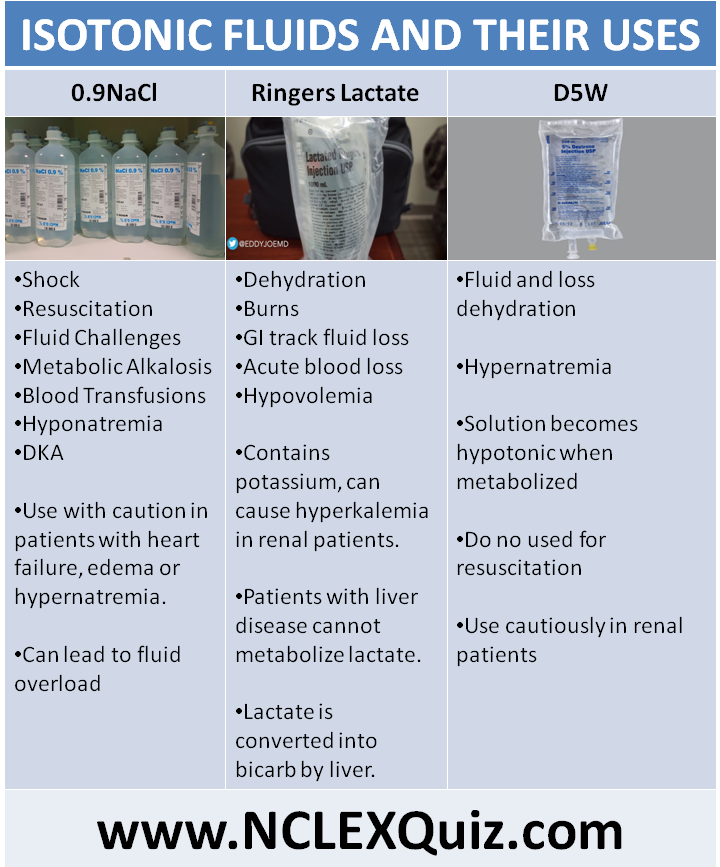Isotonic, Hypotonic & Hypertonic IV Fluid Solution
Breaking Down IV Fluids: The 4 Most Commonly Types and Their Uses
It is important for all nurses to understand why their patient has specific orders in place, and how it affects their overall treatment plan.
Isotonic Fluids and their uses
Isotonic solutions are used: to increase the EXTRACELLULAR fluid volume due to blood loss, surgery, dehydration, fluid loss that has been loss extracellularly.
 :
:
9% Normal Saline ( also known as NS, 0.9NaCl, or NSS)
This is one of the most common IV fluids because it works for most hydration needs due to vomiting, diarrhea, hemorrhage, or even shock.
Lactated Ringers (also known as LR, Ringers Lactate, or RL)
This solution is an isotonic crystalloid that contains sodium chloride, potassium chloride, calcium chloride, and sodium lactate in sterile water.
5% Dextrose in Water (also known as D5 or D5W)
Is an isotonic carbohydrate (sugar) solution that contains glucose (sugar) as the solute.
45% Normal Saline (also known as Half Normal Saline, 0.45NaCl)
This is a hypotonic crystalloid solution of sodium chloride dissolved in sterile water (unlike 0.9% Normal Saline which is isotonic, as mentioned above).